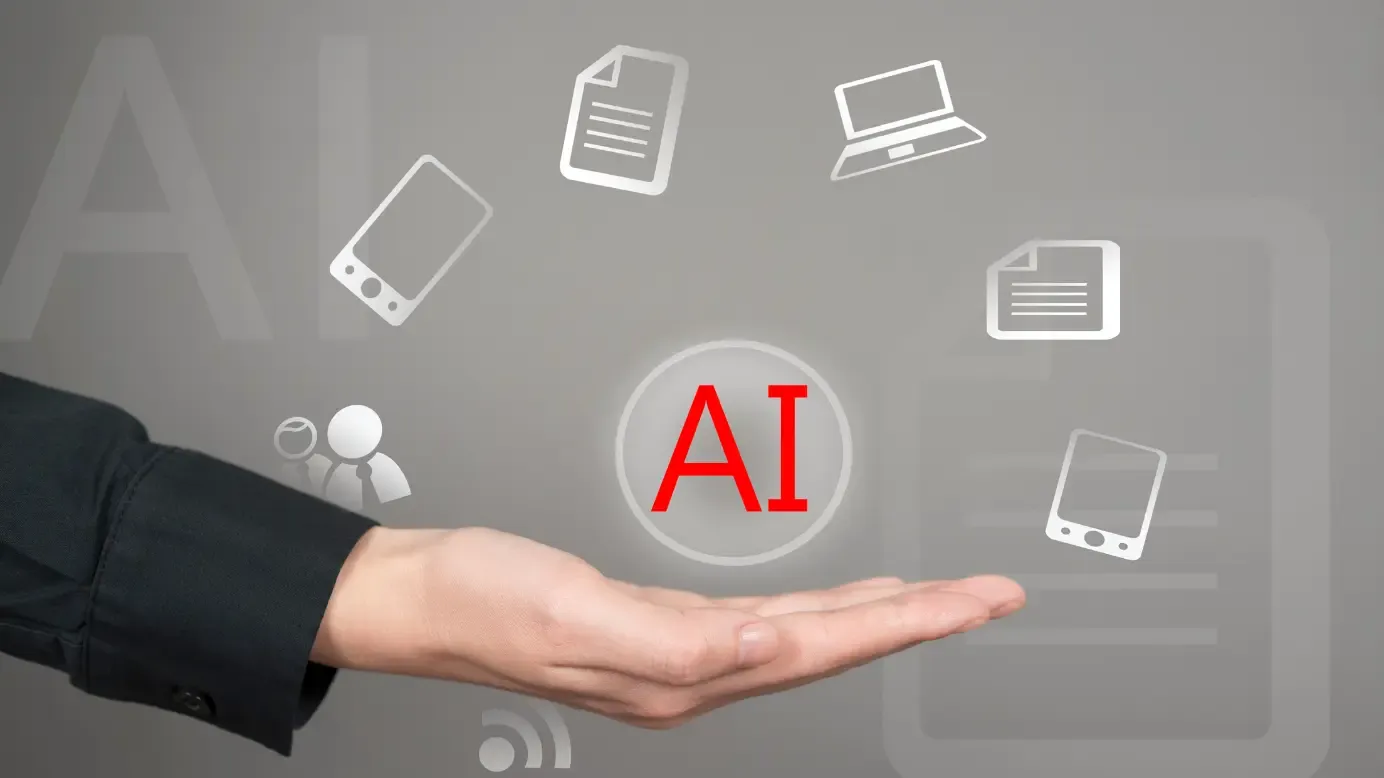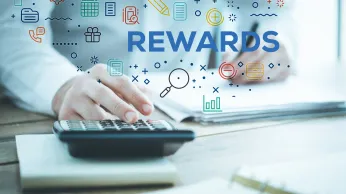AI in HR: Benefits, Tools & Future Trends for HR Professionals To Look For
Artificial intelligence in human resources (HR) is transforming the way companies manage recruitment, engagement, and performance. With AI tools for HR becoming more advanced, businesses are streamlining processes and boosting employee satisfaction.
Auf dieser Seite
- What is Artificial Intelligence in HR?
- Vorteile von AI bei der Verbesserung der Mitarbeitererfahrung
- How is AI used in human resources?
- Top AI Tools for Human Resources in 2025
- Fallstudien und Beispiele aus der Praxis für KI im Personalwesen
- Challenges and ethical considerations when leveraging artificial intelligence in HR
- How Empuls supports AI-powered employee management (EM)
- Future of AI in HR: Trends and predictions
- Schlussfolgerung
- FAQs
Der Künstlichen Intelligenz (KI) wird ein Wandel in fast allen Branchen vorausgesagt, auch im Personalwesen. Einige große Unternehmen wie die HR- und Talentakquise-Teams von Google und IBM haben damit begonnen, KI in ihren täglichen Arbeitsabläufen einzusetzen, um die Effizienz und Produktivität zu steigern und mit der sich ständig weiterentwickelnden digitalen Landschaft Schritt zu halten.
It has been reported that 76% of HR leaders believe that if they don't adopt HR practices in the next 1-2 years, they will not be as successful as the companies that have already incorporated AI technology.
Employees are the backbone of every company, and AI plays a huge role in enhancing the employee experience. AI has already been used in various aspects of employee management by supporting employees in learning and development and creating personalized upskilling programs based on their unique needs and preferences.
KI-Tools können auch zum Wohlbefinden der Mitarbeiter beitragen, da verschiedene Tools wertvolle Erkenntnisse über die Arbeitsbelastung und das allgemeine Wohlbefinden der Mitarbeiter liefern.
KI hat erhebliche Auswirkungen auf das Personalwesen und kann dazu beitragen, viele Aspekte der Branche neu zu gestalten. Die Integration von KI in die HR-Praktiken hat sowohl für Unternehmen als auch für Arbeitnehmer verschiedene Vorteile.
Da künstliche Intelligenz in die Personalabteilung integriert wird, erwarten die Beteiligten, dass sie effizient eingesetzt wird. Da viele Branchen KI einsetzen, um schneller und effizienter zu arbeiten, müssen sich die Unternehmen anpassen und der Konkurrenz voraus sein.
What is Artificial Intelligence in HR?
AI in HR refers to implementing Machine Learning (ML), Natural Language Processing (NLP), and other AI technologies to automate human resources tasks and aid decision-making.
It allows for a data-based approach to talent acquisition, employee advancement, and retention that aims to reduce biases and enhance job seekers' and employees' experiences.
AI tools can assist HR teams in diverse areas, including employee records management, payroll processing, recruitment, onboarding, and performance management.
Until recently, human resources was viewed as a purely administrative department. HR analytics (which sprung up ever since the rise of the digital era) introduced a more evidence-based approach to managing people, including a data-driven model instead of intuition-based decision-making.
Das datengesteuerte Modell umfasste die Erfassung und Analyse von Personaldaten wie Fluktuationsraten, Fehlzeiten und demografische Daten der Mitarbeiter, um Muster zu erkennen und die Entscheidungsfindung im Personalwesen zu unterstützen.
However, with the gradual passing of time and the introduction of advanced data analytics and AI tools, the role of HR has evolved. HR departments today use data more strategically to make better decisions, predict future trends, and contribute to organizational performance and growth.
Because of this, organizations now acknowledge HR as an effective strategic partner that can help shape business strategy and gain a competitive edge.
Interestingly, 81% of HR leaders are exploring AI to improve organizational efficiency, and 93% use AI tools to reduce organizational costs. One of the top barriers for 37% of HR Managers implementing AI is the lack of integration into the existing systems.
While traditional AI applications have streamlined HR tasks, generative AI is revolutionizing the field by enabling the creation of new content and insights. According to McKinsey, generative AI offers significant value in HR through:
- Content creation: Automating the development of job postings and personalized candidate communications.
- Data summarization: Extracting insights from unstructured data to enhance performance management.
- Employee engagement: Utilizing AI-driven chatbots to provide personalized learning recommendations.
- People analytics: Analyzing large datasets to predict attrition and inform workforce planning.
These are only few applications of AI that can lead to the substantial efficiency gains and more informed decision-making in HR functions.
Vorteile von AI bei der Verbesserung der Mitarbeitererfahrung
Es gibt verschiedene Vorteile, die HR-Teams durch den Einsatz von KI zur Verbesserung der Mitarbeitererfahrung erzielen können. Einige der wichtigsten Vorteile sind:
1. Straffung der Einstellungsprozesse
AI algorithms can effectively analyze vast candidate data, enhancing the recruitment process's speed and accuracy. AI can also provide more objective candidate evaluation, which can help reduce unconscious biases and ensure a fair selection process. It removes human error and subjective decision-making, which fosters fairer hiring practices.
KI hat auch das Potenzial, das Verhalten des Bewerbers am Arbeitsplatz durch fortschrittliche Analysetechniken zu bewerten, was dazu beitragen kann, die beste Eignung für das Unternehmen zu ermitteln. KI kann auch dabei helfen, den künftigen Personalbedarf zu prognostizieren, indem sie die Unternehmensstrategie, Markttrends und Leistungsdaten analysiert.
2. Verbesserung des Onboarding
AI can help automate the daily onboarding tasks and allows HR teams to focus on the strategic side of things. AI can also help create a personalized onboarding experience, as it will be tailored to each employee's individual needs, enhancing their initial engagement and allowing them to integrate seamlessly into the company's culture. By quickly setting up your accounts and offering personalized training programs, AI-driven systems help speed up the recruitment and onboarding process.
3. Förderung des Engagements der Mitarbeiter
KI-Tools können die Ziele und Leistungen der Mitarbeiter kontinuierlich verfolgen und zeitnahes Feedback geben. Durch die Festlegung klarer und messbarer Ziele fördert die KI auch unvoreingenommene Leistungsbewertungen.
AI can also analyze performance data to help predict future performance trends, which supports successful planning and talent management. AI-automated performance management can also lead to enhanced productivity and better results.
4. Strategic workforce planning enhanced by AI
AI facilitates strategic workforce planning by analyzing current workforce capabilities and predicting future talent needs. Through data-driven insights, HR can identify skill gaps, forecast turnover rates, and develop targeted recruitment strategies.
For instance, AI can assess the impact of emerging technologies on job roles, enabling proactive reskilling programs. This strategic approach ensures that organizations remain agile and prepared for future workforce challenges.
How is AI used in human resources?
Artificial Intelligence (AI) is transforming human resources by automating repetitive tasks, improving decision-making, and enhancing employee experiences. HR departments are leveraging AI to streamline their operations and create more personalized, efficient, and data-driven processes.
From recruitment to employee retention, AI is helping HR professionals focus on strategic initiatives that drive business growth. Here are some common applications of AI in human resources:
- Recruitment and talent acquisition: AI automates resume screening, candidate ranking, and job matching using algorithms and predictive analytics.
- Employee engagement and support: Chatbots and virtual assistants provide real-time assistance and support, improving employee satisfaction and productivity.
- Onboarding and training: AI tools generate personalized onboarding experiences and recommend learning paths tailored to individual roles and goals.
- Performance management: AI analyzes performance data to offer objective feedback and identify high-potential employees for succession planning.
- Workforce planning: Predictive analytics help HR teams forecast hiring needs, detect flight risks, and optimize workforce strategies.
- Diversity and inclusion: Natural language processing (NLP) detects biases in job descriptions and promotes inclusive language to attract diverse candidates.
- Policy and content creation: Generative AI tools help create consistent, data-backed HR documents, such as job descriptions, training manuals, and performance summaries.
With these applications, AI is reshaping the future of work by empowering HR teams to be more agile, proactive, and employee-centric.
Top AI Tools for Human Resources in 2025
KI-Tools und -Technologien werden jetzt in die HR-Praktiken integriert, um die Effizienz zu steigern, das Engagement der Mitarbeiter zu erhöhen und wünschenswerte Geschäftsergebnisse zu erzielen. Zu den wichtigsten KI-Tools und -Technologien im Personalwesen gehören:
1. Chatbots und virtuelle Assistenten
AI chatbots are virtual assistants that use artificial intelligence to support and assist employees. These chatbots can answer frequently asked questions, provide insights about the company's policies, and assist with basic HR tasks and inquiries. AI chatbots can help streamline employee support processes, lessen response times, and enhance employee satisfaction.
KI-gestützte virtuelle Assistenten können Personalabteilungen bei verschiedenen Aufgaben helfen, z. B. um ihre Arbeit effizienter und effektiver zu gestalten. Sie können auch dazu beitragen, sich wiederholende HR-Aufgaben wie Onboarding, Austritte und die Verwaltung von Sozialleistungen zu automatisieren.
They can also offer personalized recommendations to employees regarding career development, performance management, and other training opportunities. Virtual assistants can also allow HR specialists to focus on more strategic tasks and enhance employee engagement.
2. Predictive analytics
Predictive-Analytics-Lösungen nutzen KI-Algorithmen, um Mitarbeiterdaten zu untersuchen und Personen mit einem höheren Erfolgspotenzial in ihrer Rolle zu beobachten. Diese Methoden können auch den zukünftigen Erfolg vorhersagen, indem sie frühere Leistungen und Variablen des beruflichen Werdegangs berücksichtigen.
By identifying high-potential candidates, companies can focus their development efforts and offer progress in the company. Predictive analytics can aid succession planning by identifying prospective talent within the organization.
Die Nutzung von prädiktiven Analysen kann zu einer besseren Personalplanung führen. KI kann durch die Analyse einer riesigen Datenmenge Muster und Trends erkennen und ermöglicht es Unternehmen, intelligentere Entscheidungen in Bezug auf Einstellungen und Nachfolgeplanung zu treffen. Mit Hilfe von Predictive Analytics können auch potenzielle Abwanderungsrisiken erkannt werden, so dass Personalabteilungen Strategien entwickeln können, um Top-Talente effektiv zu binden.
3. Natürliche Sprachverarbeitung (NLP)
HR professionals use NLP techniques to analyze employee and candidate data, emails, resumes, and feedback. NLP algorithms analyze unstructured text data to utilize valuable information, including sentiment analysis, personality traits, and competency.
Dies kann HR-Teams dabei helfen, Entscheidungen über Einstellungen und die Bindung von Talenten zu treffen und die Motivation der Mitarbeiter zu verbessern. NLP kann auch HR-Prozesse wie die Überprüfung von Lebensläufen, die Analyse von Mitarbeiterfeedback und die Bewertung von Bewerbern automatisieren.
Personalverantwortliche können NLP nutzen, um Lebensläufe zu scannen und den richtigen Kandidaten für die Stelle zu finden. NLP-Algorithmen extrahieren Schlüsselwörter und Phrasen, gleichen sie mit der Stellenbeschreibung ab und ordnen die Kandidaten anhand ihrer Qualifikationen ein.
NLP kann auch zur Stimmungsanalyse eingesetzt werden, um zu ermitteln, wie gut die Bewerber in die Unternehmenskultur passen. NLP-Algorithmen können auch Verzerrungen in Stellenausschreibungen erkennen und eine integrative Sprache verwenden, um die Vielfalt im Bewerberpool zu erhöhen.
4. AI Centers of Excellence (CoE) in HR
Establishing an AI Center of Excellence (CoE) within HR departments serves as a centralized body to oversee AI initiatives. The CoE is responsible for setting best practices, ensuring compliance with ethical standards, and facilitating knowledge sharing across the organization.
By having a dedicated team focused on AI, HR can more effectively integrate AI tools for human resources, drive innovation, and maintain consistency in AI applications.
5. Generative AI (GenAI) in HR
Generative AI (GenAI) is revolutionizing HR by enabling the creation of content such as job descriptions, training materials, and policy documents. HR departments are leveraging GenAI to automate repetitive tasks, allowing professionals to focus on strategic initiatives.
For instance, GenAI can generate personalized onboarding materials tailored to individual roles, enhancing the new hire experience. Additionally, it aids in drafting performance review summaries by analyzing employee data, ensuring consistency and objectivity.
Fallstudien und Beispiele aus der Praxis für KI im Personalwesen
Sehen wir uns einige Beispiele aus der Praxis an, wie einige der weltweit führenden Unternehmen KI in ihre HR-Praktiken integriert haben und wie diese Strategie ihnen zum Erfolg verholfen hat.
1. Unilever's AI-powered recruitment
Unilever's HR department has replaced conventional hiring with digital interviews and AI-powered online assessments. This unique approach also expands the talent pool by enhancing diversity and inclusivity.
It also reduces unconscious biases, which ensures a fair and objective selection process. This has resulted in a more efficient hiring process that aligns with the demands and expectations of the modern talent pool.
2. KI-gesteuertes Mitarbeiterengagement bei Hilton
Hilton has implemented AI-driven strategies to enhance employee engagement. These strategies aim to improve the employee experience, increase productivity, and reduce turnover rates. By implementing AI, Hilton saw an opportunity to enhance human connection and responsiveness in the application and interview process.
Die Personalverantwortlichen erkannten die Möglichkeiten der KI, um die für die Besetzung offener Stellen benötigte Zeit zu verkürzen, die Erfahrung der Bewerber zu verbessern und den Verwaltungsaufwand der Personalverantwortlichen zu verringern. Dies führte zur Entwicklung von Ally, einem Chatbot für eingehende Bewerber, der auf der Karriereseite von Hilton zu finden war.
Hilton setzte KI auch für Videointerviews und Bewertungen ein, was zu einem Net Promoter Score von 85 und besseren Einstellungsquoten führte. Mithilfe von Ally wird die Stelle, auf die Sie sich bewerben, mit einem Link auf Ihr Telefon geschickt, über den Sie Ihre Hilton-Bewerbung in weniger als einer Minute ausfüllen können, was ziemlich beeindruckend ist.
3. IBMs Watson-Analytik im Personalwesen
IBM Watson Orchestrate is an AI-powered tool that allows HR professionals to automate routine HR tasks, analyze data, and make better business decisions. It uses Natural Language Processing (NLP) to draw from prebuilt and custom skills to implement functions specific to human resources processes by integrating with applications that your HR department already relies on.
Personalverantwortliche können mit Orchestrate zeitaufwändige Aufgaben wie die Kandidatensuche und das Recruiting automatisieren, so dass sie ihre Zeit und Energie auf die strategischeren Aspekte der Personalbeschaffung konzentrieren können. Dies hat die Produktivität von HR-Fachleuten erhöht, was zu besseren Einstellungen von außergewöhnlichen Kandidaten führt.
Orchestrate hilft auch dabei, manuelle Beschaffungsaufgaben zu automatisieren, wodurch das Team bei IBM wertvolle Zeit für die Planung strategischer Initiativen und die Erfüllung der Bedürfnisse und Anforderungen des Kunden gewinnt. Onboarding erfordert menschliche Aufmerksamkeit und eine Menge Papierkram. IBMs Watson automatisiert diesen zeitaufwändigen Prozess und führt neue Kandidaten nahtlos in das Unternehmen ein.
Durch die Auslagerung dieser Aufgaben an Orchestrate können sich die HR-Teams auf einen wirkungsvolleren, menschenzentrierten Ansatz für das Unternehmen und die Mitarbeiter konzentrieren und diesen umsetzen.
Challenges and ethical considerations when leveraging artificial intelligence in HR
Although there are many benefits that artificial intelligence offers to HR teams, there are still some challenges and ethical considerations that you need to be aware of when incorporating AI in HR practices. Some critical factors to consider include:
1. Datenschutz und Datensicherheit
Mit dem zunehmenden Bedarf und Einsatz von KI in der Personalarbeit, insbesondere beim Umgang mit sensiblen Mitarbeiter- und Bewerberdaten, wachsen die Bedenken hinsichtlich Datenschutz und Cybersicherheit. Unternehmen müssen mit den Daten ihrer Mitarbeiter sensibel und sorgfältig umgehen und Datenschutzbestimmungen wie GDPR und CCPA einhalten.
Obwohl der Einsatz von KI in der Personalabteilung immer mehr an Fahrt gewinnt, haben viele Personalverantwortliche Bedenken hinsichtlich ihrer Genauigkeit. Sie sind auch besorgt über die Garantie, dass die sensiblen Daten von Mitarbeitern und Bewerbern nicht für das weitere Training des KI-Modells verwendet werden, was letztlich ihre Privatsphäre und Sicherheit gefährdet.
HR departments need to implement robust cybersecurity measures, like investing in a Remote access VPN, using reliable antivirus software, and using multi-factor authentication to maintain trust, protect employees' confidential information, and ensure they're protected from potential data breaches.
2. Voreingenommenheit und Fairness in der KI
One of the most significant drawbacks of using AI is the bias during the hiring process. The US Equal Opportunity Employment Commission announced in May last year that employers using AI tools can be liable for discriminatory hiring practices. HR leaders need to ask specific questions during the software purchasing process and ensure they are aware of any potential biases.
KI-Algorithmen können soziale Voreingenommenheit in den Daten, auf denen sie trainiert wurden, verewigen. Achten Sie auf potenziell diskriminierende Ergebnisse aufgrund von Geschlecht, Ethnie, Alter und anderen sensiblen Merkmalen.
Wenn die Daten, die zum Trainieren von KI-Modellen verwendet werden, mit Vorurteilen behaftet sind, dann können diese Vorurteile im Entscheidungsprozess fortbestehen. Dies kann zu diskriminierenden Einstellungspraktiken und ungleichen Chancen für Mitarbeiter mit unterschiedlichem Hintergrund führen.
3. Einheitslösungen für alle
KI-gesteuerte HR-Systeme können Standardlösungen für die häufigsten Probleme der Personalabteilung bieten. Dies kann zwar zur Effizienzsteigerung beitragen, führt aber auch zu einem Mangel an individueller Unterstützung für die persönlichen Bedürfnisse und Anforderungen der Mitarbeiter.
Jeder Mitarbeiter bringt seine eigenen Stärken, Schwächen und Erfahrungen mit an den Arbeitsplatz. Wenn man sich bei der Verwaltung der Mitarbeiterleistung und -entwicklung ausschließlich auf KI verlässt, kann dies die menschliche Note und Verbindung verhindern, die für das Verständnis und die Förderung von Spitzentalenten erforderlich sind.
4. Emphasis on human-centered AI approaches
Adopting a human-centered approach to AI in HR ensures that technology serves to augment human decision-making rather than replace it. This involves designing AI systems that are transparent, explainable, and aligned with human values.
For example, AI-driven recruitment tools should provide insights into their decision-making processes, allowing HR professionals to understand and trust the outcomes. By focusing on human-centered AI, organizations can foster greater acceptance and effective utilization of AI tools for human resources.
5. Navigating AI-induced workforce disruptions
The introduction of AI in HR processes may lead to workforce disruptions, including changes in job roles and required skill sets.
Organizations must proactively manage these transitions by communicating changes, providing reskilling opportunities, and involving employees in the transformation process. By addressing potential disruptions head-on, companies can mitigate resistance and foster a culture of adaptability.
How Empuls supports AI-powered employee management (EM)
As HR teams increasingly turn to artificial intelligence for smarter and faster decision-making, Empuls stands out as a powerful platform that bridges AI with employee management (EM) to create more engaged, productive, and satisfied workforces. Empuls doesn’t just streamline processes—it enhances the entire employee lifecycle, making it a valuable addition to any HR tech stack embracing AI.
1. Automating employee engagement with intelligent nudges

Empuls uses AI-powered nudges and personalized notifications to drive participation in engagement programs. Whether it’s pulse surveys, recognition events, or wellness challenges, the platform ensures that employees stay informed and motivated through timely reminders. This automation reduces manual follow-ups and ensures consistent engagement across teams.
2. Using analytics to improve employee experience

Empuls provides real-time dashboards and sentiment analysis based on employee feedback, surveys, and interactions. With built-in analytics, HR leaders can identify patterns in engagement, burnout risk, and recognition trends. These insights empower organizations to make data-driven decisions to retain top talent and elevate morale.
3. Enabling continuous recognition and rewards

Recognition is a key pillar of employee management, and Empuls automates this with AI-driven suggestions and reward triggers. For example, if an employee reaches a milestone or consistently exceeds performance goals, Empuls can automatically prompt managers to recognize and reward them through digital badges, gift cards, or custom awards.
This fosters a culture of continuous appreciation, boosts motivation, and aligns with the broader AI-driven approach to HR.
4. Personalizing employee communication at scale

AI in HR thrives on personalization, and Empuls leverages this by delivering tailored internal communications to employees based on their behavior, location, and preferences. Whether it's onboarding information, learning modules, or wellness updates, the right message is delivered to the right person at the right time—without HR teams needing to micromanage every message.
This enhances the employee communication experience, a critical component of AI-led EM strategies.
5. Supporting strategic HR planning with feedback insights

With Empuls, HR teams can conduct pulse surveys, lifecycle feedback, and eNPS measurements with ease. The platform uses AI to categorize and summarize open-ended responses, helping HR teams quickly interpret employee sentiment and act on it. This feedback loop is essential for shaping talent strategies and planning workforce interventions proactively.
Whether you're aiming to reduce attrition, drive engagement, or improve your employer brand, Empuls offers the AI-enabled infrastructure to support your goals and stay ahead of the competition. Schedule a call now to learn more!
Future of AI in HR: Trends and predictions
Die Zukunft der Personalabteilung und ihr Fortschritt sind eng mit künstlicher Intelligenz verbunden. KI wird dazu beitragen, die HR-Praktiken umzugestalten, sodass Personalbeschaffung, Talentakquise und Mitarbeiterverwaltung effizienter werden. HR-Fachleute können nun ihre Prozesse rationalisieren und sich auf datengesteuerte Ergebnisse konzentrieren.
The integration of AI in HR has led to the creation of specialized roles aimed at managing and optimizing AI tools for human resources. Positions such as HR AI Product Managers and AI Ethics Officers are becoming increasingly common.
These roles are responsible for overseeing the deployment of AI solutions, ensuring ethical considerations are addressed, and aligning AI initiatives with organizational goals. By having dedicated professionals in these positions, companies can better navigate the complexities of AI implementation in HR.
Gartner reports that by 2025, "60% of enterprise organizations will adopt a responsible AI framework for their HR technology, and in turn, achieve a greater employee experience and trust in the organization."
Es ist jedoch wichtig zu beachten, dass KI den Bedarf an Personalfachleuten nicht ersetzen wird. Die menschliche Perspektive und Erfahrung spielen im Personalwesen eine entscheidende Rolle, damit Unternehmen florieren und wachsen können. Deshalb müssen Unternehmen das richtige Gleichgewicht zwischen Technologie und menschlicher Interaktion finden, um von den Vorteilen zu profitieren.
Schlussfolgerung
KI-Tools und -Lösungen können das Mitarbeitererlebnis verbessern und die Mitarbeiterbindung erhöhen. Mitarbeiter können ihre sich wiederholenden Verwaltungsaufgaben loswerden, Arbeitsabläufe rationalisieren und neue technische Fähigkeiten erwerben.
Der Einsatz von KI zur Verbesserung der Mitarbeitererfahrung trägt zum Wohlbefinden der Mitarbeiter bei und hilft auch dem Unternehmen, einen guten Ruf aufzubauen. KI-Tools können personalisierte Schulungsprogramme erstellen und manuelle und sich wiederholende Aufgaben automatisieren, was einen reibungslosen Arbeitsablauf, Mitarbeitermotivation und Produktivität ermöglicht.
FAQs
1. What is the role of AI in HR?
AI in HR streamlines and enhances tasks like recruitment, onboarding, performance management, and workforce planning. It helps automate repetitive processes, improve decision-making with data insights, reduce biases, and personalize employee experiences.
2. Can HR be replaced by AI?
No, AI cannot fully replace HR. While it automates tasks and boosts efficiency, the human touch in areas like employee relations, ethical decision-making, and organizational culture is irreplaceable. AI supports HR, but doesn’t eliminate the need for human professionals.
3. What companies use AI in HR?
Top companies using AI in HR include Unilever, Hilton, IBM, and Google. These companies leverage AI for recruiting, engagement, onboarding, and analytics, improving both operational efficiency and employee experience.
4. How much is AI used in HR?
AI usage in HR is rapidly increasing—81% of HR leaders are exploring AI to improve efficiency, and 93% use it to reduce costs. Its adoption spans various functions, with growing reliance on tools like chatbots, predictive analytics, and generative AI.













